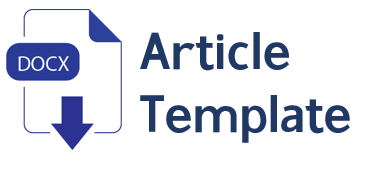Integration of Natural Language Processing in a Web-Based Translanguaging System for Arabic-Indonesian Language Learning
DOI:
https://doi.org/10.30741/jid.v4i1.1753Keywords:
Translanguaging, Natural Language Processing (NLP), Web-Based Learning, Arabic–Indonesian, Bilingual EducationAbstract
Arabic–Indonesian language learners often face challenges in understanding the contextual meaning of texts due to differences in morphological and syntactic structures between the two languages. To address this, this study proposes the development of a web-based translanguaging system integrated with Natural Language Processing (NLP) to help users understand and translate texts more meaningfully. This system was developed using the Waterfall model with stages of requirements analysis, design, implementation, testing, and maintenance. The implemented NLP module includes tokenization, part-of-speech tagging, and sentence structure analysis to produce translations that consider context, not just literal word equivalents. The implementation results show that the system is able to improve user comprehension of Arabic–Indonesian texts with a simple and accessible interface. Furthermore, the translation history feature supports continuous self-learning. Although the system still has limitations in handling idiomatic text and complex sentence structures, the NLP integration has proven effective in improving the quality of translanguaging. This research contributes to the development of bilingual learning technology and can be further developed using deep learning models such as BERT or mBERT to improve semantic and contextual accuracy.
References
Abu–Rabia, S. (2002). Reading in a root–based–morphology language: the case of Arabic. Journal of Research in Reading, 25(3), 299–309.
Adamopoulou, E., & Moussiades, L. (2020). An overview of chatbot technology. IFIP International Conference on Artificial Intelligence Applications and Innovations, 373–383.
Afrita, J. (2023). Peran artificial intelligence dalam meningkatkan efisiensi dan efektifitas sistem pendidikan. COMSERVA: Jurnal Penelitian Dan Pengabdian Masyarakat, 2(12), 3181–3187.
Baazeem, I., Al-Khalifa, H., & Al-Salman, A. (2021). Cognitively driven arabic text readability assessment using eye-tracking. Applied Sciences, 11(18), 8607.
Chiche, A., & Yitagesu, B. (2022). Part of speech tagging: a systematic review of deep learning and machine learning approaches. Journal of Big Data, 9(1), 10.
Fanni, S. C., Febi, M., Aghakhanyan, G., & Neri, E. (2023). Natural language processing. In Introduction to artificial intelligence (pp. 87–99). Springer.
Muchlis, M. (2024). Translanguaging as a strategy in fostering multilingual students’ comprehension at Mambaus Sholihin 2 High School Blitar. Universitas Islam Negeri Maulana Malik Ibrahim.
Mustaqim, M., Gunawan, A., Pratama, Y. B., & Zaliman, I. (2023). Pengembangan Chatbot Layanan Publik Menggunakan Machine Learning Dan Natural Languange Processing. Journal of Information Technology and Society, 1(1), 1–4.
Orús, R., Wei, T.-C., Buerschaper, O., & García-Saez, A. (2014). Topological transitions from multipartite entanglement with tensor networks: a procedure for sharper and faster characterization. Physical Review Letters, 113(25), 257202.
Petersen, K., Wohlin, C., & Baca, D. (2009). The waterfall model in large-scale development. International Conference on Product-Focused Software Process Improvement, 386–400.
Rakhmat, M., & Qohar, H. A. (2024). Pengaruh Bilingualisme dalam Bahasa Indonesia. Ranah Research: Journal of Multidisciplinary Research and Development, 6(6), 3057–3072.
Reknadi, D. B., Kristian, Y., & Harianto, R. A. (2022). Classification of Criticisms and Suggestions on Public Services at RSI Nashrul Ummah Lamongan Using K-Competitive Autoencoder. Proceeding International Conference on Environment Health, Socioeconomic and Technology, 1, 151–161.
Reknadi, D. B., Rohman, M. G., & Utomo, A. F. L. (2025). Adaptation of Contrastive Learning and Augmentation for Indonesian Product Review Classification on Unbalanced Data Using Deep Learning and NLP. Generation Journal, 9(2), 105–116.
Trismanto, T. (2018). Ambiguitas dalam bahasa Indonesia. Bangun Rekaprima, 4(1), 42–48.
Wulandari, D. A., Widagdo, A., Shafira, H., Maulida, A., Wardani, R. W., Sarnita, S., & Rahmawati, A. (2025). Analisis Penerapan Strategi Pembelajaran Bilingual pada Video Praktik Pembelajaran di Sekolah Dasar. Jurnal Inovasi Penelitian Ilmu Pendidikan Indonesia, 177–183.
Downloads
Published
How to Cite
Issue
Section
License

This work is licensed under a Creative Commons Attribution-NonCommercial 4.0 International License.









